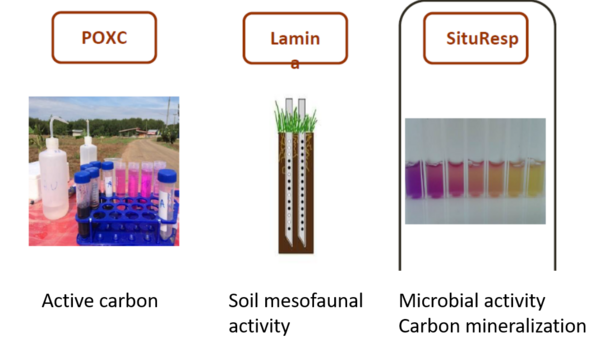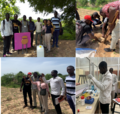An innovative in-field assessment of ecological functioning (BIOFUNCTOOL®) of soils is conducted at various project sites in order to provide low cost and field-based indicators of tree/shrub contribution to soil health under different cropping practices. A set of indicators available in the project context is selected and used to describe and compare major groups of soil functions, namely:
- Carbon dynamics,
- Nutrient cycles, and
- Soil structure stability.
A more detailed description can be found at the link below.
In order to implement that; scientists from the IRD team of SustainSahel have trained several students and colleagues in Senegal and Burkina Faso. During the 2021 cropping season, activities essentially concentrated on testing three indicators:
- Permanganate oxidizable carbon (POXC) assayed by colorimetric reaction as a proxy of soil active C content,
- Bait laminas as tests for meso/microfaunal activity, seen by the kinetics of baits consumption, and
- In situ respiration (SituResp) as a proxy for organic matter mineralisation dynamics, with a colorimetric assay.
The first results clearly highlighted a strong potential for trees and shrubs to enhance carbon dynamics in soils, in every tested situation (for instance, in a trial in Senegal conducted by IRD and ISRA, presence of Faidherbia albida tree enhanced POXC by 100%, bait lamina consumption by 20%, and in situ respiration by 80% on average).
Written by: Laurent Cournac (WP5 co-lead), Cathy Clermont Dauphin, Komi Assigbetsé, Lamine Dieng, Aissatou Diouf, Moussa Ndiénor from IRD, ISRA
Further information
Weblinks
Sciencedirect.com: Biofunctool®: a new framework to assess the impact of land management on soil quality. Part A: concept and validation of the set of indicators (EN)
Downloads




 tap and then scroll down to the Add to Home Screen command.
tap and then scroll down to the Add to Home Screen command.